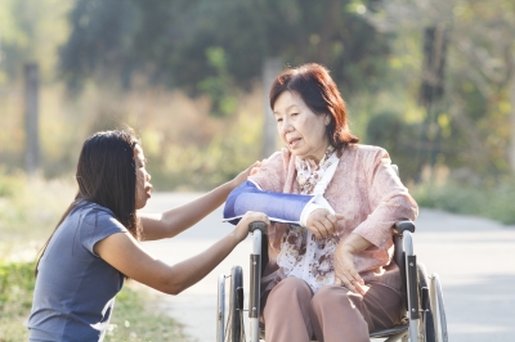The $279 Billion Healthcare Opportunity You Should Be Targeting
While healthcare companies strive to appeal to patients and clinicians, family caregivers are largely overlooked.
January 8, 2016

Jamie Hartford
Here’s a trivia question: What is the largest demographic of caregivers in the United States?
It’s not physicians, of whom there are fewer than 1 million, according to the Henry J. Kaiser Family Foundation. Nor is it registered nurses, who number just under 4 million.
Believe it or not, family caregivers outnumber both of those groups—and by a lot. AARP estimates that 43.5 million people in the United States have provided unpaid care for an adult over the past year.
This demographic represents a huge opportunity for healthcare companies. By 2020, the total caregiver support market is expected to reach $279 billion, according to AARP.
“There is an incredible amount of activity that’s going on right now [in this area],” Jody Holtzman, AARP senior vice president for enterprise strategy, told an audience today at the Digital Health Summit at the 2016 CES tradeshow in Las Vegas. In the last eight months, three startups focused on caregiving support—Honor, HomeHero, and Hometeam—have each raised more than $20 million in venture capital. “Why is that?” Holtzman asked. “It’s because everybody is looking for where the next growth opportunity is, where is the next market.”
While entrepreneurs are finally starting to take notice of this largely untapped market, it hasn’t always been that way. In the past, Holtzman said, healthcare companies were hesitant to market products and services to unpaid caregivers because they couldn’t collect reimbursement from payers. But the growing caregiver demographic has plenty of purchasing power of its own.
“If there’s a value proposition, people will spend money out of pocket,” Holtzman said.
This year alone, caregivers and care recipients are expected to shell out a combined $35 billion in out-of-pocket spending, according to AARP.
Because family caregivers can help improve heath outcomes for their charges and avoid costly emergency room visits, payers are also starting to get behind their efforts. In 2005, eldercare solutions company Seniorlink began a pilot of its Caregiver Homes program in Massachusetts, offering support, coaching, and financial help through Medicaid for home caregivers.
“The result has been the Medicaid system in Massachusetts saved several millions of dollars,” Holtzman said.
Since then, the Caregiver Homes program has been expanded to five other states.
But while designing solutions for caregivers could be lucrative for healthcare entrepreneurs, this market is a challenging one to tap into for a couple of reasons.
For starters, many people don’t play the role of caregiver full time, or they only provide care on a short-term basis, such as after a loved one undergoes surgery. As a result, many don’t even identify themselves as caregivers, Jeff Makowka, director of the market innovation, enterprise strategy, and innovation group at AARP, said during a panel discussion at the event.
That can make it hard for companies developing caregiver solutions to identify their customers and make them aware of their products. “Mass advertising is not going to work,” explained David Inns, CEO of GreatCall Inc., a provider of products and services intended to help seniors continue to live independently.
Because caregivers often don’t think of themselves as such, UnitedHealthcare is taking a different tack. Instead of asking caregivers to identify themselves, the health insurer asks care recipients whether they have help at home. It has so far seen success in querying Medicare Advantage patients, and Vidya Raman-Tangella, head of UnitedHealthcare’s Innovation Center of Excellence, said hospital discharge could present another opportunity to tease out this information.
Retailers such as Amazon could also help decipher whether someone is a caregiver based on purchase histories, said Sanjay Khurana, vice president of caregiving products and services at AARP.
A second challenge in targeting the caregiver market is the fact that it’s not homogeneous. While one caregiver may only take their loved one to doctors’ appointments, another may provide full-time, live-in care. Motivations, too, can vary, with one caregiver helping out a neighbor because they enjoy it, while another cares for an ailing parent because they’re the only family member nearby.
To create a successful caregiver solution, companies need to get inside the heads of their potential customers. “You really need to go back and see what really drives their motivation. Immerse yourself in that journey,” Khurana said. Getting caregivers and care recipients involved during the development process can help companies avoid missteps. “If we don’t understand both aspects, we’re building a half-assed product,” he said.
For caregiver solutions to work, they also need to be end to end, which may require companies to collaborate. “Think beyond your technology and product,” Raman-Tangella said. “It isn’t one [thing] that’s going to solve everything.”
And while many Americans suddenly find themselves grappling with the need to provide care for a loved one, she stressed that in many other parts of the world caregiving has long been ingrained in the culture. “What can we learn from those countries, from other cultures that we can bring here?”
With 10,000 Americans turning 65 every day and 117 million people predicted to need assistance of some kind by 2020, according to AARP, it’s a question worth asking.
Learn about more opportunities in healthcare at the MD&M West conference, February 9-11, 2016, at the Anaheim Convention Center. |
Jamie Hartford is MD+DI's editor-in-chief. Reach her at [email protected] or on Twitter @MedTechJamie.
[image courtesy of TOA55/FREEDIGITALPHOTOS.NET]
You May Also Like

.png?width=300&auto=webp&quality=80&disable=upscale)
